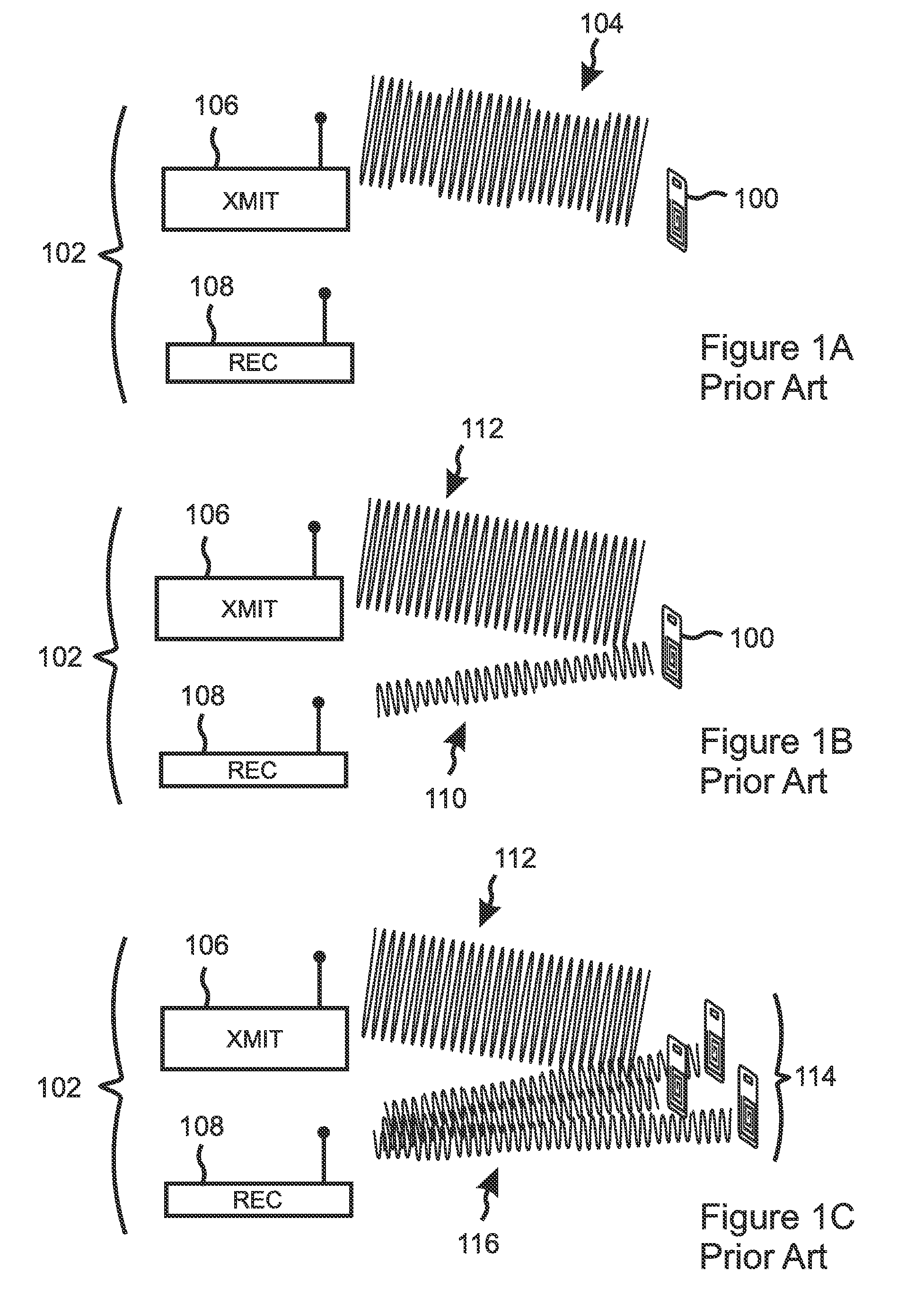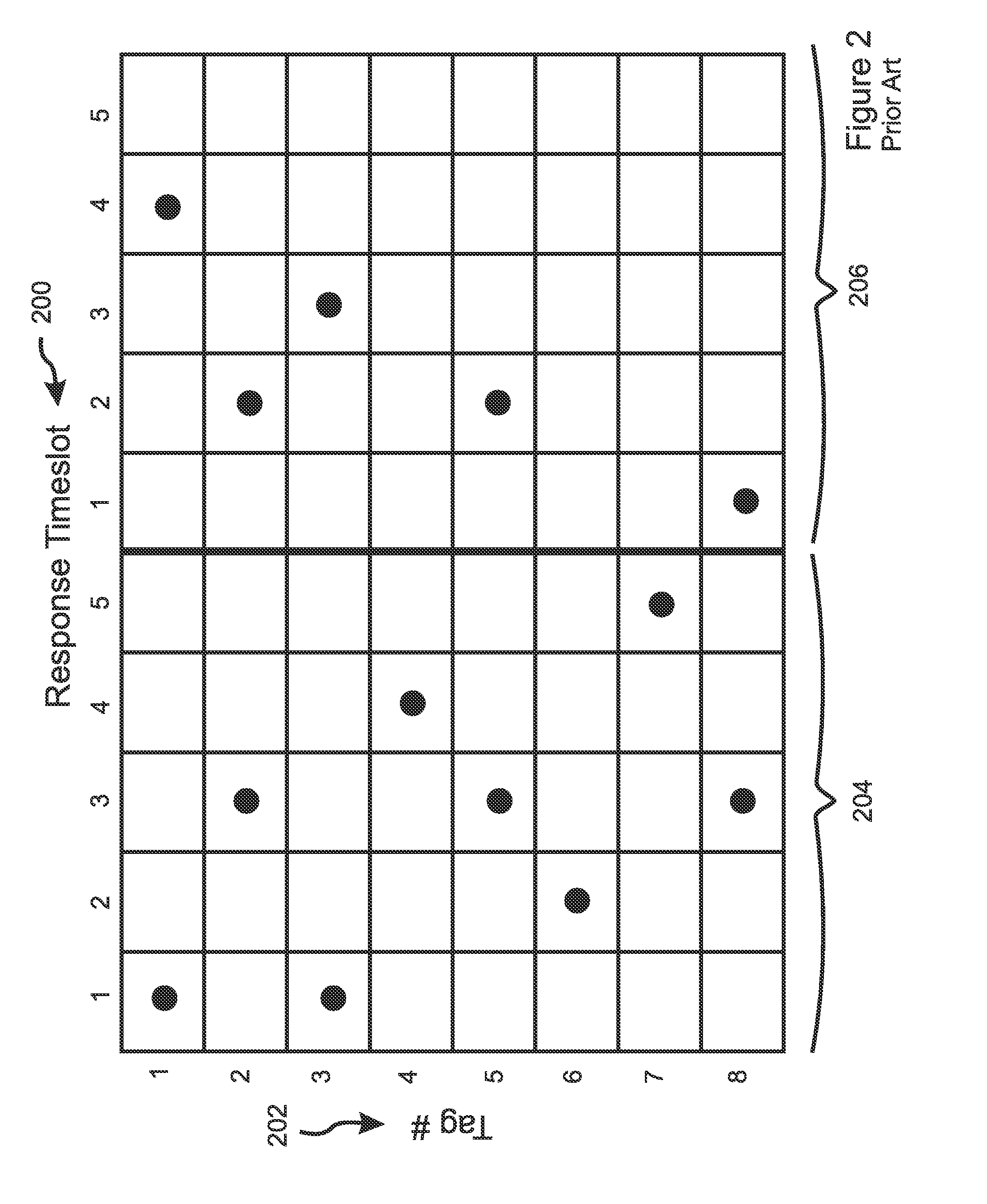Method for simultaneous detection of a plurality of RFID tags using multiuser detection
a multi-user detection and simultaneous detection technology, applied in the field of electronic identification systems, can solve the problems of more complicated time-dependent behavior that differentiates rfid tags, and achieve the effect of accurately distinguishing each of the individual responses and reducing the latency of rfid detection
- Summary
- Abstract
- Description
- Claims
- Application Information
AI Technical Summary
Benefits of technology
Problems solved by technology
Method used
Image
Examples
Embodiment Construction
[0051]Based on current RFID designs, a problem occurs when a plurality of RFID tags is simultaneously queried by an RFID detector, for example a plurality of RFID tags that are attached to each product carried by a shipping pallet. In such a case the detector will receive a nearly simultaneous response from every tag that is located within its detection range, resulting in collisions of the data packets transmitted by the tags. Prior art approaches have implemented protocols that cause packets to transmit their information at random times, and to re-transmit until a collision-free transmission is achieved. The present invention applies Multi-User Detection (“MUD”) to distinguish overlapping packets, thereby reducing or eliminating the need for random delays and / or re-transmissions.
[0052]Signal Model
[0053]So as to understand how the present invention solves this problem, it is helpful first to understand the physics and define a representative signal model that incorporates collision...
PUM
 Login to View More
Login to View More Abstract
Description
Claims
Application Information
 Login to View More
Login to View More - R&D
- Intellectual Property
- Life Sciences
- Materials
- Tech Scout
- Unparalleled Data Quality
- Higher Quality Content
- 60% Fewer Hallucinations
Browse by: Latest US Patents, China's latest patents, Technical Efficacy Thesaurus, Application Domain, Technology Topic, Popular Technical Reports.
© 2025 PatSnap. All rights reserved.Legal|Privacy policy|Modern Slavery Act Transparency Statement|Sitemap|About US| Contact US: help@patsnap.com



